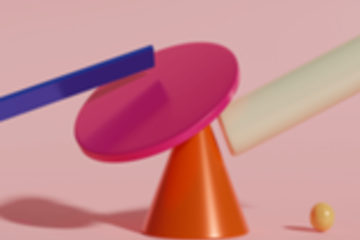Browse
Disciplinary Content
Posted on: #iteachmsu

DISCIPLINARY CONTENT
Ratios
Critical Component #1: Honoring Student Experience
When asking students to explore issues of personal and social identity, teachers must provide safe spaces in which students are seen, valued, cared for, and respected. It is also important that students have opportunities to learn from one another’s varied experiences and perspectives. To create this learning environment, teachers need to skillfully draw on student experiences to enrich the curriculum.
Critical Component #2: Thoughtful Classroom Setup and Structure
Without saying a word, classrooms send messages about diversity, relationship building, communication, and the roles of teachers and students. The classroom setup should be student-centered. Specifics will vary from teacher to teacher and class to class, but common elements include the following:
Classroom milieu. Classrooms should be decorated with multicultural images that mirror students’ backgrounds and showcase the diversity of our society.
Arrangement of furniture
When asking students to explore issues of personal and social identity, teachers must provide safe spaces in which students are seen, valued, cared for, and respected. It is also important that students have opportunities to learn from one another’s varied experiences and perspectives. To create this learning environment, teachers need to skillfully draw on student experiences to enrich the curriculum.
Critical Component #2: Thoughtful Classroom Setup and Structure
Without saying a word, classrooms send messages about diversity, relationship building, communication, and the roles of teachers and students. The classroom setup should be student-centered. Specifics will vary from teacher to teacher and class to class, but common elements include the following:
Classroom milieu. Classrooms should be decorated with multicultural images that mirror students’ backgrounds and showcase the diversity of our society.
Arrangement of furniture
Posted by:
Chathuri Hewapathirana

Posted on: #iteachmsu


Ratios
Critical Component #1: Honoring Student Experience
When asking stud...
When asking stud...
Posted by:
DISCIPLINARY CONTENT
Thursday, Apr 29, 2021
Posted on: #iteachmsu

DISCIPLINARY CONTENT
Classroom Culture
The rising educator identifies and evaluates successful strategies for implementing and sustaining the critical components of equitable classroom culture in a learning space.
Method Components
Critical Components of Classroom Culture
Skilled educators accept responsibility for planning and delivering instruction that brings the five critical components described below to life for all learners.
At times, external factors beyond the classroom walls will affect an educator’s ability to sustain all five critical components. Skilled educators find ways wherever possible to ensure that these five critical components are present in all aspects of classroom culture.
Critical Component #1: Honoring Student Experience
When asking students to explore issues of personal and social identity, teachers must provide safe spaces in which students are seen, valued, cared for, and respected. It is also important that students have opportunities to learn from one another’s varied experiences and perspectives. To create this learning environment, teachers need to skillfully draw on student experiences to enrich the curriculum.
Critical Component #2: Thoughtful Classroom Setup and Structure
Without saying a word, classrooms send messages about diversity, relationship building, communication, and the roles of teachers and students. The classroom setup should be student-centered. Specifics will vary from teacher to teacher and class to class, but common elements include the following:
Method Components
Critical Components of Classroom Culture
Skilled educators accept responsibility for planning and delivering instruction that brings the five critical components described below to life for all learners.
At times, external factors beyond the classroom walls will affect an educator’s ability to sustain all five critical components. Skilled educators find ways wherever possible to ensure that these five critical components are present in all aspects of classroom culture.
Critical Component #1: Honoring Student Experience
When asking students to explore issues of personal and social identity, teachers must provide safe spaces in which students are seen, valued, cared for, and respected. It is also important that students have opportunities to learn from one another’s varied experiences and perspectives. To create this learning environment, teachers need to skillfully draw on student experiences to enrich the curriculum.
Critical Component #2: Thoughtful Classroom Setup and Structure
Without saying a word, classrooms send messages about diversity, relationship building, communication, and the roles of teachers and students. The classroom setup should be student-centered. Specifics will vary from teacher to teacher and class to class, but common elements include the following:
Posted by:
Chathuri Hewapathirana

Posted on: #iteachmsu


Classroom Culture
The rising educator identifies and evaluates successful strategies ...
Posted by:
DISCIPLINARY CONTENT
Thursday, Apr 29, 2021
Posted on: #iteachmsu

DISCIPLINARY CONTENT
Image Dimension
Dimension Test :424 x 263
Google Images earlier offered a useful “search by size” option in advanced search to help you find logos, wallpapers and other images on the Internet by their exact size (or resolution).
For instance, you could limit your search for landscape photographs to image files that were at least 10 Megapixels in size. Or, if you are were using Google Image search to find wallpapers for the desktop, you could specify the image resolution as 1920x1080 pixels and Google would only return large images with those exact dimensions
Google Images earlier offered a useful “search by size” option in advanced search to help you find logos, wallpapers and other images on the Internet by their exact size (or resolution).
For instance, you could limit your search for landscape photographs to image files that were at least 10 Megapixels in size. Or, if you are were using Google Image search to find wallpapers for the desktop, you could specify the image resolution as 1920x1080 pixels and Google would only return large images with those exact dimensions
Posted by:
Chathuri Super admin..

Posted on: #iteachmsu


Image Dimension
Dimension Test :424 x 263
Google Images earlier offered a useful “s...
Google Images earlier offered a useful “s...
Posted by:
DISCIPLINARY CONTENT
Thursday, Apr 8, 2021
Posted on: #iteachmsu

DISCIPLINARY CONTENT
Google Images
How to Search Google Images by the Exact Size
ref:https://www.labnol.org/internet/google-image-size-search/26902/#:~:text=Here's%20how.,that%20match%20the%20specified%20size.The “exact size” search option is no longer available in Google Image Search but you can still limit your image searches to a particular size by using the secret imagesize search operator in the query itself.
Here’s how.
Go to images.google.com and enter the search terms as before. Then append imagesize:WIDTHxHEIGHT to your query and hit Enter. Google Images will remove the operator from the query but the results will only display images that match the specified size.
ref::https://www.img2go.com/result#j=076d9aae-9369-4903-81f9-1c3e58e31ff7 Dimension : 519x334
ref:https://www.labnol.org/internet/google-image-size-search/26902/#:~:text=Here's%20how.,that%20match%20the%20specified%20size.The “exact size” search option is no longer available in Google Image Search but you can still limit your image searches to a particular size by using the secret imagesize search operator in the query itself.
Here’s how.
Go to images.google.com and enter the search terms as before. Then append imagesize:WIDTHxHEIGHT to your query and hit Enter. Google Images will remove the operator from the query but the results will only display images that match the specified size.
ref::https://www.img2go.com/result#j=076d9aae-9369-4903-81f9-1c3e58e31ff7 Dimension : 519x334
Authored by:
mit Agarwal

Posted on: #iteachmsu


Google Images
How to Search Google Images by the Exact Size
ref:https://www.labno...
ref:https://www.labno...
Authored by:
DISCIPLINARY CONTENT
Thursday, Apr 8, 2021
Posted on: #iteachmsu

DISCIPLINARY CONTENT
Alignment Principle Application for Learning Units
he educator plans a successful learning unit by applying the constructive alignment principle. This includes building relationships among learning outcomes, assessment, and learning activities.
Method Components
The learning unit is a learning experience that results in a learner being able to do something they could not do prior to having the learning experience. This new ability or competency is called Unit Learning Outcome. The effectiveness of a learning unit can be enhanced by using the philosophies of outcome-based education, which focuses on organizing everything around the achievement of the learning outcomes and related competencies (Spady, 1994). One of the key elements in designing this learning unit is to apply the constructive alignment principle. This micro-credential shows how to apply the constructive alignment principle when planning a learning unit.ref: credential: https://microcredentials.digitalpromise.org/explore/constructive-alignment-principle-application-for-l
Method Components
The learning unit is a learning experience that results in a learner being able to do something they could not do prior to having the learning experience. This new ability or competency is called Unit Learning Outcome. The effectiveness of a learning unit can be enhanced by using the philosophies of outcome-based education, which focuses on organizing everything around the achievement of the learning outcomes and related competencies (Spady, 1994). One of the key elements in designing this learning unit is to apply the constructive alignment principle. This micro-credential shows how to apply the constructive alignment principle when planning a learning unit.ref: credential: https://microcredentials.digitalpromise.org/explore/constructive-alignment-principle-application-for-l
Authored by:
King Mongkut's University of Technology Thonburi

Posted on: #iteachmsu


Alignment Principle Application for Learning Units
he educator plans a successful learning unit by applying the constr...
Authored by:
DISCIPLINARY CONTENT
Monday, Apr 5, 2021
Posted on: #iteachmsu

DISCIPLINARY CONTENT
Visual and Environment
The student could then chart her score using a computer programUse behavioral and environmental prompts to increase desired classroom behaviors. For example, pictorial prompts of students attending in class serve as a reminder of the teacher’s expectations for learning and behavior. Electronic visual aids such as interactive whiteboards and document cameras are helpful for capturing the attention of students with ADHD (Piffner, 2011).
Posted by:
Chathuri Super admin..

Posted on: #iteachmsu


Visual and Environment
The student could then chart her score using a computer programUse ...
Posted by:
DISCIPLINARY CONTENT
Monday, Mar 29, 2021
Posted on: #iteachmsu

DISCIPLINARY CONTENT
Creational Design Pattern
1Factory Pattern
Abstract Factory Pattern
Singleton Pattern
Prototype Pattern
Builder Pattern.
Abstract Factory Pattern
Singleton Pattern
Prototype Pattern
Builder Pattern.
Posted by:
Rupali Jagtap
Posted on: #iteachmsu

Creational Design Pattern
1Factory Pattern
Abstract Factory Pattern
Singleton Pattern
Protot...
Abstract Factory Pattern
Singleton Pattern
Protot...
Posted by:
DISCIPLINARY CONTENT
Thursday, Feb 11, 2021
Posted on: #iteachmsu

DISCIPLINARY CONTENT
Communication to Support Student Learning in a Digital Learning Environment
Ref: https://microcredentials.digitalpromise.org/explore/communication-to-support-student-learning-in-a-dig
Educator provides evidence of their understanding of communication and outlines and provides evidence of a lesson that uses technology to support students’ use of communication in learning.
Method Components
What are the 4Cs?
The 4Cs for 21st century learning are Creativity, Critical Thinking, Communication, and Collaboration. They are part of the framework for 21st Century Learning and are designed to support student learning in today’s world and are skills they can use in college and career.
Educator provides evidence of their understanding of communication and outlines and provides evidence of a lesson that uses technology to support students’ use of communication in learning.
Method Components
What are the 4Cs?
The 4Cs for 21st century learning are Creativity, Critical Thinking, Communication, and Collaboration. They are part of the framework for 21st Century Learning and are designed to support student learning in today’s world and are skills they can use in college and career.
Posted by:
Chathuri Super admin..

Posted on: #iteachmsu


Communication to Support Student Learning in a Digital Learning Environment
Ref: https://microcredentials.digitalpromise.org/explore/communicat...
Posted by:
DISCIPLINARY CONTENT
Wednesday, Feb 3, 2021

